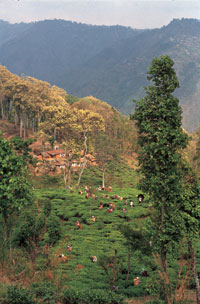Different strokes for different folks

What have been the tourist arrival figures from this region?
We calculate the number of visitors from the region on the basis of the visas issued and in 2006; 50,076 visas were issued.
This was a 19 per cent increase as compared to visitor numbers from 2005. We are expecting a similar increase in 2007.
How do you plan to reach out to the local market?
India is a big market and the UAE’s contribution is high. Medical tourism is a popular product. But we offer more than state-of the art hospitals and certified doctors. We have tied up with several hotels, resort and tour operators in various cities across India to develop packages where tourists can experience India while they are there for medical purposes. With resorts, we are able to offer them spa packages. For tourists going to Delhi, we offer trips to Agra.
Another initiative gaining popularity is rural tourism. Villages are a very important part of our country and the Government of India has selected 50 villages across the country to offer tourists a real experience. These villages are developed with three-star accommodation facilities, proper sanitation facilities and offer an opportunity to live and learn about these villagers and their occupation – be it handicrafts or pottery or even cloth printing.
This month, we will send a team from various parts of the world to participate in the Nehru Boat Race to be held in Kerala.
Such initiatives will help discover a new side to India. Moreover, with the nationals the trend is changing. They are willing to experience these adventures, go on a house boat, go to the Himalayas and explore new areas. A second Palace on Wheels will be launched next October, is also very popular among tourists. The first Palace on Wheels is completely booked until 2008.
What about new initiatives?
We want to promote new destinations within India, primarily North East India, including states like Assam for its tea gardens and Sikkim for its monasteries. The South has always been popular, for their temples and Ayurvedic treatments, but now we are looking at Hyderabad for the MICE market. The Hyderabad International Convention Centre, which will open in 2008, is a state-of the art facility with capacity of 6,500 people. Bangalore has always been synonymous with some of the finest educational institutes and hence sees the potential for Educational Tourism.
We have also launched the Incredible India Bed & Breakfast promotion. This is currently operational in Delhi and Jaipur, with plans to expand across the country. The tourism ministry has classified as three-star a number of homes with extra rooms available for as little as $60-70.
Is Indian Tourism ready for the growth it is currently seeing?
Yes. And we are still growing. With the 2010 Commonwealth Games in New Delhi, preparations in terms of developing infrastructure, providing better roads, easy accessibility and developing more hotels rooms are already under operation. The government has also planned to open several new airports. The Incredible India campaign has taken tourism in India to a different level. Proper budgets are allocated both on state and national levels.
Now that the Taj Mahal is one of the New Seven Wonders, do you expect to see and influx of visitors from this region?
The Taj Mahal is our ‘bread and butter’, it is our national brand. Yes a lot of plans in terms of renovation work, providing better accessibility to Agra and development of more hotel rooms are underway currently, but it is one of those products which will sell on its own. Our focus presently is much beyond that.
The year 2007 started in a big way with your participation at ITB. How do you plan to sustain that momentum?
The initiative taken at ITB to spread awareness about India being the next best destination is remarkable. We were able to reach out to agents from all over. The exposure we received was amazing and yes, we need to keep the excitement going with unique packages.
What about visas on arrival for Middle Eastern travellers?
The home ministry is working on offering visa on arrival from a few countries, but talks are still on. In any case, attaining an Indian tourist visa, at the moment, does not take more than two days.
What plans for the rest of the year?
To sell India. India today is the only living civilization with its rich heritage. Nowhere else will you find something uniquely different at every 200kms – from culture to language or even the food they eat.
While most our neighbouring countries see an average stay of six or seven nights, in India we see an average of 27 nights and it is still not enough to learn and experience India completely.
